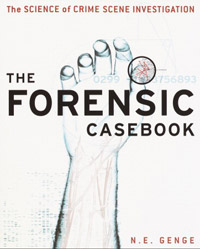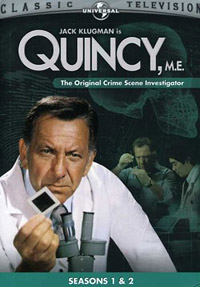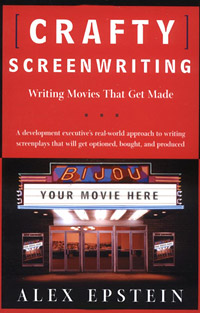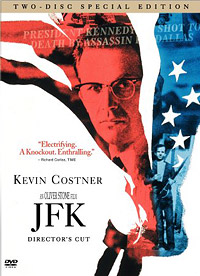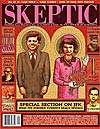In this week’s eSkeptic:
Hear Lisa Randall this Monday
Knocking on Heaven’s Door: How Physics and Scientific Thinking Illuminate the Universe and the Modern World
SPECIAL DAY & TIME:
Monday, October 10, 2011 at 7:30 pm
Baxter Lecture Hall, Caltech
FROM ONE OF TIME MAGAZINE’S 100 MOST INFLUENTIAL PEOPLE IN THE WORLD, Harvard University physicist and cosmologist Dr. Lisa Randall presents a rousing defense of the role of science in our lives. The latest developments in physics have the potential to radically revise our understanding of the world: its makeup, its evolution, and the fundamental forces that drive its operation. Knocking on Heaven’s Door is an exhilarating and accessible overview of these developments and an impassioned argument for the significance of science…
Tickets are first come first served at the door. Seating is limited. $8 for Skeptics Society members and the JPL/Caltech community, $10 for nonmembers. Your admission fee is a donation that pays for our lecture expenses.

Bad Wolf
On November 8, 2005 Canadian geological engineering student Kenton Carnegie went for a walk. He told people that he’d be back by 5 pm. When he hadn’t returned by 7 pm, a search party went out and discovered his remains in the woods. In this episode of Monstertalk (a follow-up to last week’s), we interview professor Valerius Geist about the true cause of Kenton Carnegie’s death. Some people thought he was killed by a bear, but more likely he was killed by a myth.
Get the Podcast App
for your Android phone.
(iPhone App coming soon)
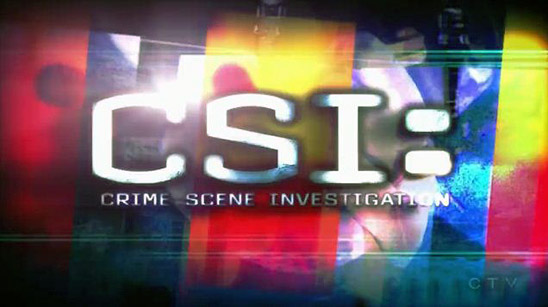
About this week’s feature article

From the birth of the mass media to today’s top news stories, the crime drama has remained popular. As far back as Arthur Conan Doyle’s Sherlock Holmes mysteries, published between 1887 and 1927, the search for physical clues to help solve the crime has been an important component of sleuthing. It has been only recently, however, that the marriage of the most advanced techniques of science with criminal investigation has been offered as drama in the entertainment business’s most popular medium: prime-time television.
In this week’s eSkeptic, sociologist Eric Goode presents a light-hearted skeptical analysis of the C.S.I. (Crime Scene Investigation) television series in which extraordinary claims are made for the power of science to solve crimes.
This article appeared in Skeptic magazine volume 10, number 4 (2004).
A Skeptic Meets C.S.I.:
Crime Scene Investigation
by Erich Goode
The lead investigator began burning some residue from a human corpse “directly over gunpowder that still covered the body.” That left Danny Thomas, former member of the Clarke County Fire Department “staring at his TV screen.” Exclaimed Thomas, “No, definitely not. Nobody plays around like that.” Ngaire Genge, author of The Forensic Casebook says that CSI: Crime Scene Investigation “normally takes some pains to get forensic details right,” but in this case, she admits, the program simply blew it.
In The Demon-Haunted World, Carl Sagan argued that it is the responsibility of scientists to light “a candle in the dark” and combat the malefic influence of ignorance, irrationality, and superstition. One of Sagan’s favorite targets was the media, which present science in a biased, inaccurate way. Paranormal beliefs and pseudoscience are given credence they do not deserve, while science is portrayed as arbitrary, repressive, or just plain wrong. It is the job of scientists, he argued, to convince media representatives to set the record straight.
Sagan is half right. Film and television drama portrays all of real life imperfectly. John Nash’s schizophrenia in A Beautiful Mind bears an extremely oblique relationship to any mental disorder known to psychiatrists; Gladiator distorted the reality of combat in the Roman Coliseum; and the archaeology depicted in Raiders of the Lost Ark is fanciful nonsense. In fact, it could not be otherwise. Dramatic truth differs from — indeed, often violently contrasts with — factual truth. The mission of the dramatist diverges from the mission of the journalist, the historian, and the social scientist. All too often, audiences find the literal facts of the matter tedious and boring.
Scholars by the score have tried to correct the impressions left by media distortion, but objections to factual errors in movies and television may be beside the point. Writing about films based on history, Robert Brent Toplin, author of Reel History: In Defense of Hollywood, argues that a certain measure of “manipulation” is “inevitable.” Time is compressed, life is simplified, and villains and heroes are rendered in stark, black-or-white terms. While some films seriously corrupt the reality of their subjects — Toplin singles out Amistad, Mississippi Burning, and The Hurricane — most effectively “communicate important ideas.”
When does license become distortion? When do scholars make a legitimate point in challenging the factual basis of dramatic representations of their subjects of expertise?
From the birth of the mass media to tomorrow’s broadcast, the crime drama has remained popular. At least as far back as Arthur Conan Doyle’s Sherlock Holmes mysteries, published between 1887 and 1927, the search for physical clues to help solve the crime has been an important component of sleuthing. It has been only recently, however, that the marriage of the most advanced techniques of science with criminal investigation has been offered as drama in the entertainment business’s most popular medium — prime-time television. Quincy, a television series that ran between 1976 to 1983, depicted a crusty but kind-hearted medical examiner who solved crimes by using the low-tech forensic tools available at the time. Three current programs portraying today’s far more sophisticated science of criminalistics have become enormously popular. During most weeks during 2003, among all television programs, Nielsen rated C.S.I (Crime Scene Investigation) in the #1 or #2 spot in audience size, while Crossing Jordan and CSI: Miami ranked in the top 20.
How well do these programs depict the science of criminal forensics? They don’t, according to Tom Mauriello, who for a quarter-century has been teaching criminalistics, the science of using physical evidence to solve crimes, at the University of Maryland. He has also authored a basic textbook, Criminal Investigation Handbook, updated yearly. A Maryland campus police officer for eight years during the 1970s, Mauriello investigated narcotic, sex, and violent crimes.
“These programs present forensic science in an unrealistic light,” Mauriello explained. “The general public watches them, gets a certain idea of how criminalistics works, then they get victimized [by a crime], and they feel they’ve been cheated. Crime investigation doesn’t work the way it appears on television. The same thing with our criminal justice students. This job looks so exciting from beginning to end, and it’s not. It gives them false expectations.”
Mauriello levels his most serious charge at the roles portrayed by the TV criminalist. “The roles aren’t even real,” he argued. “Three entirely different jobs are conflated into one. First of all, there’s the evidence technician, whose job is to collect and process evidence and deliver it to the crime lab. They all used to be cops. Now some are and some aren’t. Then there’s the lab scientist — the chemist, the microbiologist, who provides analysis in their specialty. Then there’s the field investigator who goes out and tries to solve the crime. These jobs are entirely separate and distinct. No one does all three.”
Mauriello also finds fault with the science on which TV criminal investigations are based. He cites one especially damning case of CSI’s use of voice spectrometry. In one broadcast, he explains, the investigators conned a suspect into saying the same words uttered by the perpetrator, captured on tape. When the yellow and blue segments of the suspect’s voice spectrum overlapped, they produced green. “Ah ha!” the investigators exclaimed, “We’ve got our man!” In truth, Mauriello said, “there is no graphic representation that provides an exact match. It’s not like a fingerprint. It’s all fake.” In real life, the scientists who work with voice spectrometry “keep looking at their graphic representations of voices, trying to pick out what’s unique about each individual voice. They haven’t got it yet.”
Dr. William Johnston, a criminalist with the California Department of Justice for 15 years, then a forensic consultant for another 15, is less harsh in his judgment. Commenting specifically on CSI, he said, “some of it tells it like it is. But in any drama, you have to have excitement, you have to have quick results, and you have to have conclusive results. These [CSI-type] programs don’t depict the unsolved cases and the long, tedious hours, days, and weeks working in the lab with no results,” he asserted. “Most of what we do is wasted screen time,” Dr. Johnston told me. Still, he had to admit, the impact of C.S.I. and related programs has been positive. Distortion aside, “these programs bring attention to our profession. When I tell people I do criminal forensics, they know what I’m talking about.”
Arthur Conan Doyle hit upon the perfect formula when he wrote stories that blended mystery with the brilliant mind of Sherlock Holmes and the deductive power of empirical science. Today’s crime scene investigation programs carry on that tradition, but their scientific toys may have become the tail wagging the dog. The informed viewer sometimes feels the program’s raison d’être is to show off the gizmos. Black lamps that reveal purple or green blobs on the floor, laser beams whose razor-thin shafts of red light criss-cross a darkened room, a machine that spits out reams of paper whose graphs pin-point the presence of drugs in the deceased’s body — these are effective dramatic devices that rivet the audience’s attention to the unfolding story. But do the investigative devices serve the story, or the other way around?
Three homicides were featured on CSI: Miami’s February 17th broadcast: the stabbing of a man through a sheetrock wall, in which the victim was in a booth in a porno parlor, having simulated sex with a prostitute; the forced drowning of a man in a toilet that was located on a houseboat; and the vehicular homicide of a woman by a man driving what was described as a $100,000 Jaguar. In each case, the investigation centered on searching for and evaluating evidence for the murders of victims who were dispatched by extremely exotic methods.
The Federal Bureau of Investigation tabulates the known weapons used for all murders that take place each year in the United States. In 2001, a shade over six out of 10 of the victims — 63% — were dispatched by firearms. The FBI did not indicate how many took place through a sheetrock wall, but an eighth, or 13%, were done away with by means of a knife or other cutting instrument. And a total of only 23 victims were drowned, again, no indication of how many had their heads shoved into a toilet. Vehicular homicide is common, but it is almost never intentional. Vehicular murder is so rare as to make front-page news, as the case of Clara Harris — the Texas dentist who ran over her unfaithful husband with the family’s SUV — demonstrates. Not only are CSI: Miami’s three murders not representative, they are extremely improbable, so rare as to be all but statistically impossible. But their investigation made for strong narrative drama, and perhaps that’s the point.
Would more realism translate into less popularity? Alex Epstein is the author of Crafty Screenwriting, a screenwriter for Galidor, a Saturday and Sunday morning fantasy program on ABC, and co-creator of Sexual Anthropology, a television series that will begin shooting in the fall. “Where you draw the line” between drama and literal reality, he explained, “is really a decision the writers make when they create the show.” Actually, he told me, CSI “is intended to be one of the more realistic shows.” Some other programs, he admitted, “play much more loose and fast with forensics.” Increasingly, audiences have gotten “more and more sophisticated, and they expect more realism. You can’t get away with Perry Mason-style courtroom confessions.”
Still, Epstein explained, “good drama follows the rules of good story telling: condense, condense, condense.” Most important of the many condensations the screenwriter has to make from the tumult and complexity of real life is with what Epstein calls “the cast of characters.” What Mauriello, the forensics specialist, saw as a drawback, Epstein, the screenwriter, sees as a dramatic necessity. “Real police work would involve a different specialist for every sub-genre of forensics. You’d have your blood spatter specialist and your powder burn specialist.”
The second form of condensation is with time, Epstein explained. In real life, “you’d have an investigation that takes weeks and pores over minute clues that lead nowhere. Who wants to see that? We’re telling stories,” he emphasized. “If you were telling the story of an investigation to a friend, you wouldn’t mention the clues that led nowhere, unless there’s a big red herring. You wouldn’t mention the weeks. You’d tell the story in the most dramatic way possible.”
When discussing historical film drama, Robert Brent Toplin distinguishes the “details” from “the big picture.” Some films — he cites Glory as an example — are so true to the “broader truths” about the Civil War experiences of African Americans that their fudging of a few details is beside the point. In contrast, others so egregiously misrepresent big picture truths that they fail to work even as fiction. Mississippi Burning is a travesty of historical drama because, far from bravely helping civil rights workers in the 1960s, the FBI undermined their efforts and ignored or covered up injustices committed against them. That film pretended to narrate history, Toplin explains; instead, it whitewashed the government’s role in it.
Criminalists examine physical evidence to solve crimes. Prime-time TV dramas on criminal investigation must boil down the cast of characters, condense the length of time it takes to crack the case, and snare the perpetrator. Effective drama also requires expanding the range of weapons murderers use. If, night after night, week after week, the vast majority of TV murder victims were killed by a bullet to the brain or heart, forensic dramas would lose a major source of mystery. If, on the other hand, all the criminalists who work on case after case were in league with a vast conspiracy to hide the truth from the public — as was suggested by JFK — even the barest shred of real-world veracity falls from the bones of the narrative, giving the drama a shrill, tinny, inauthentic sound. In misrepresenting the big picture, such stories so lack verisimilitude that they do not even tell emotional or dramatic truth.
“Our job as screenwriters is to tell the emotional and dramatic truth, not the literal truth,” Epstein explained. It’s possible for fiction to lie, he said, only when it presents characters who do things in real life “that are not emotionally or dramatically true. But we don’t have an obligation to tell the literal truth because that would make it impossible to tell compelling stories.”
“Anyway,” he told me, summing up what he sees as a workable philosophy of screenwriting, “if the audience wants the literal truth, there are plenty of books for them to read.”
About the author
Dr. Erich Goode is Professor of Sociology at the State University of New York at Stony Brook, and is the author of Collective Behavior (Harcourt Brace, 1992), Paranormal Beliefs: A Sociological Introduction (Waveland Press, forthcoming), as well as a half-dozen other books on drug use and deviant behavior. In Skeptic vol. 6, no. 1, he wrote “A Skeptic’s Guide to the Drug Policy Debate.”
Skeptical perspectives on scientific investigation…
-
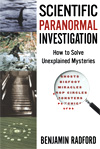 Scientific Paranormal Investigation:
Scientific Paranormal Investigation:
How to Solve Unexplained Mysteries
by Benjamin Radford
-
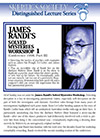 James Randi’s Solved Mysteries Workshop
James Randi’s Solved Mysteries Workshop
by James Randi




